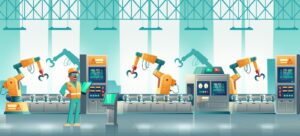Patentability of a subject matter majorly depends on: Novelty, Inventive Step and Industrial applicability – and the subject matter is supposed to comply all the three criteria to be eligible for patenting. Out of the three criteria, perhaps, proving the fact that the subject matter is inventive is the most challenging one.
Now, inventive step being a subjective matter, it is quite unpredictable at times – the way of its interpretation may vary from person to person; thus, a dearth of uncertainty is always there till the end of the tunnel, i.e. till the grant of the patent.
Table of Contents
ToggleSo let us first understand what actually is Inventive Step:
In the Indian Patents Act, 1970, Section 2(1)(ja) defines inventive step as:
““inventive step” means a feature of an invention that involves technical advance as compared to the existing knowledge or having economic significance or both and that makes the invention not obvious to a person skilled in the art;”
To check for the presence of inventive step in a patentable subject matter, the examiner is free to combine or even mosaic the teachings of multiple prior arts – and if the resultant of the mosaicking results in a subject matter which is closely related to the patentable subject matter in question, the inventive step of the subject matter stands objected. Which in other words, indicate that if the resultant effect of combined reading of the existing prior art results something which functions in the similar fashion or solves the similar issue or addresses the same issue as that of the present subject matter in question, then the same would not be considered to be having inventive step.
When it comes to economic significance as a part of inventive step assessment, it depends on the disclosure in the application document – which ideally is required to disclose how the present subject matter contributes to economy (for e.g.: 1/5th of the price of a similar subject matter etc.). Economic significance is usually not that difficult to prove if the application already discloses the economic significance or if not, the applicant should be able to prove the same during the prosecution stage.
The major challenge lies in identifying ‘a person skilled in the art’ because of the fact that ‘a person skilled in the art’ is not defined in the Indian Patents Act, 1970 – thus that always leaves the discretion to the examining authority with regard to identification of Inventive Step. Based on the case law evolution, it is generally followed that a person skilled in the art is one who:
- Belongs to the same field as that of the subject matter in question;
- Assess the subject matter based on his expertise or acquired knowledge in the same domain and is aware of the fact that small changes can bring dramatic functionality change in the subject matter.
Further, it is the ‘hindsight bias’ of the person skilled in the art results in evaluating past actions or occurrences where the evaluator is aware of how those actions or events turned out – which influences the judgement of the inventive step of the subject matter in question.
Now, how to overcome the inventive-step objection?
For an inventor or even for an attorney, learning the fact that the patent has been rejected based on the fact of invention being ‘non-inventive’ can be quite frustrating as ‘inventiveness’ is a pure subjective matter and many-a-times becomes tough to overcome.
In India, inventive step objection generally comes in the stages of First Examination Report or Hearing or Opposition. Being subjective in nature, it can definitely get tricky, but then there are ways in which inventive step, if justified logically, can be overcome. Those can be:
- Technically justify the fact that the subject matter in question is not a mere workshop improvement – it involves technical advancement, and thus even the mosaicking of prior arts would not result in the technicality as involved in the present subject matter;
- Proving the fact that the prior arts cited to challenge the inventive step fail to teach or suggest the solution to the problem as has been done by the present subject matter;
- A mere hindsight bias of the controller – without any fall back on the prior arts can be challenged based on the fact that none of the disclosures teach or suggest the solution to the problem statement as identifies as well as solved by the current subject matter;
- Additionally, if the inventive step justification isn’t convincing enough, claim or specification amendments can be done to take care of the same.
Moreover, a well drafted patent application can even minimize the occurrence of obviousness rejection in the first place itself. It helps in saving resources and achieving the intended results.
With the increasing rate of patent enforcement activities in India, it is quite frequently observed that the inventive step objections come up – but then with a properly drafted application, it can be minimized to a large extent.
Author: Priyanka Chakraborty
Copyright © 2023 Intellect Vidhya Solutions Law LLP. All rights reserved.
Frequently Asked Questions:
Is obviousness the same as inventive step?
The Term Obviousness is most of the times synonymously used for Inventive step – some Patent offices use the term Inventive Step while others use non-Obviousness.
While in India, the Indian Patents Act 1970 Section 2(1)(ja) defines inventive step, US Patent Law mentions, a patent for a claimed invention may not be obtained, notwithstanding that the claimed invention is not identically disclosed as set forth in section 102, if the differences between the claimed invention and the prior art are such that the claimed invention as a whole would have been obvious before the effective filing date of the claimed invention to a person having ordinary skill in the art to which the claimed invention pertains. Patentability shall not be negated by the manner in which the invention was made.
How is non-obviousness related to inventive step?
For a subject matter to be eligible for patenting, it should be sufficiently inventive and non-obvious. The purpose of the inventive step, or non-obviousness, requirement is to avoid granting patents for inventions which is a mere workshop improvement, and to achieve a balance between monopoly that patenting provides and encouraging invention.
What is the difference between inventive step and non-obviousness?
The expression “inventive step” is predominantly used in Indian and Europe, while the expression “non-obviousness” is predominantly used in United States patent law. Thus, they both fundamentally indicates that an invention to be eligible for patenting, should be technically sound enough and not related to any known concepts of existing prior arts.





